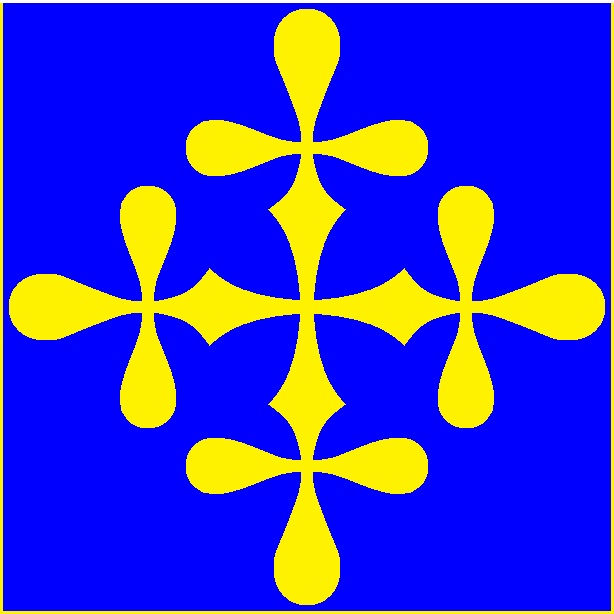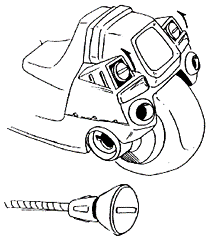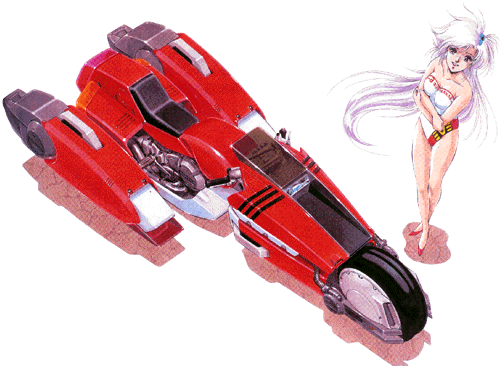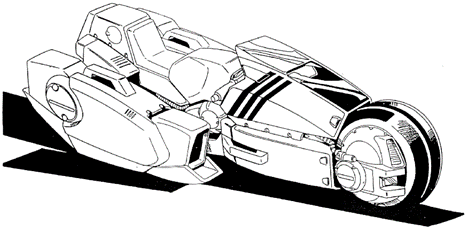 United Galaxies Council. |  United Galaxies Council. | ||||||||
|---|---|---|---|---|---|---|---|---|---|
Thomas MCCANN of Terra rebuilt an ASC-Era Hovercycle with dual Regult PBC's and used Dragon against the Invid as a resistance fighter. It is true that MCCANN focused his hatred against Human
However, MCCANN never expressed such 'interests,' and the reason was thought to have become clear later on- After the Invid left Terra, MCCANN disappeared. He returned with the Invid, this time demanding even MORE money for his services, and the money was always paid in advance- Often with a pretty hefty tip. MCCANN was a good producer. (He once killed over 100 collabs with one bomb- By tricking the slugs into "picking their own scabs.") When MCCANN disappeared, he took his hovercycle with him. Try as they had, the Robotech Expeditionary Forces were unable to replicate MCCANN'S accomplishment; Some believe that MCCANN may have exaggerated his machine's capabilities or possibly that he did another set of modifications to make it work; Every REF experiment in the field resulted in either a machine that could not fly at its proper height (MCCANN claimed he could fly at 100 feet, and there were witnesses that agreed, some of them collabs), could not fire the guns, or was way too slow for practical combat purposes. (Dragon was recovered after the Wyvern was developed and fielded.) Wyvern corrects the issues of the various ur-Dragons with some fairly novel concepts; 01. Reflex Engines: A slightly bigger version of the Cyclone's Protoculture-fueled Reflex Furnaces provide a lot more power than a 1,0002cc Hydro-Cell Turbine. However, it still isn't enough to allow the Wyvern to fight and fly at the same time for extended periods of time. 02. WHEELS: The Wyvern typically uses wheels, rather than hoverjets, to reduce the total load on the engines, and thus reduce stress on them. 03. Light Weapons: Rather than the electricity-greedy Regult PBC's, heavy lasers cannons were installed. They are shorter range and slightly less power-to-target than PBC's, but are less power-hungry and therefore the only workable option. 04. Grav Pods: Grav Pods use about 1/4 the power used by jets on the Hovercycle. This also gives it much higher flight capabilities. 05. Optional Wings: Clip-on wings can be used to increase the flight capabilities by 25% greater flight time, but make it harder to turn (-15% pilot skill for combat maneuvering and loss of bonus to dodge and strike). They also allow the mounting of some aircraft wing pods, and can be dropped in flight if necessary. The Wyvern is quite similar to a commercial motorcycle and hovercycle, though it is a bit blockier and heavier-built. It is equipped with the same sensory equipment as a Cyclone and armed, but is otherwise the same in all respects. Wyvern are typically inserted into combat using a larger delivery platform, such as a Landship, then run on the surface (using wheels) until reaching the battlefield itself, where they engage gravpods (saving the powerplant from spiking for too long). The Wyvern has been field tested extensively, and entered full-fledged service with the REF Marine, usually with Heavy Cavalry and Dragoon units. The various Robotech Defense Force Armies have requested them as well, but not in nearly the numbers- A surprising twist, since RDF's would be better suited to support them and have greater use for them, since Marines traditionally train around light-unit action. 2800 Upgrade. Beginning in January 2781 the REF Army began development of a Wyvern upgrade program, integrating a quintet of Gallant H-2000 AMS arranged evenly round the nose of the vehicle. This allowed the gun to use the vehicle's power plant and fire at a much higher rate, as the system cycles though the guns giving a "laser gatlin" effect. Due to this, the guns do not need to be cooled down (the other guns taking over more than long enough to cool the guns) and increasing the rate of fire to five times the pilot's attacks per melee (each activation causes all of the guns to fire in sequence). The limitation is the guns are permemntly set to the vehicle's alignment. Improved efficiency in the power amangment system allows the Wyvern to fly just as well as any other hovercycle, however the REF still holds the wheeled action primacy doctrine, usinf the gtav pods only as needed. A major result of this new arrangement was the redevelopment of the Light Horse concept; Lightly armed and equipped cavalry men. Two models were developed in this consideration, the Dragoon model with a rear mounted auxiliary targeting screen and grip/trigger system and modified kickstand that can be extended to used as a bipod after dismount (essentially tuning the Wyvern into a massively oversized fixed machinegun). This makes them idea for use in fixed positions to support infantry. The second version was developed for cavalry, without the rear mounted auxiliary targeting and trigger system and with the simpler basic kickstand system. Additionally, the cavalry version only has two H-2000's, reducing the rate of fire to twice the pilot's apm. This makes them ideal for supporting infantry during an assault, where they can quickly bring supporting firepower where it's most needed quickly. Both versions can still carry passengers and this in now a standard tactic (brining additional troops in to supplement whatever infantry the Wyverns are being sent in to support), but a third variant was also developed in the process entirely by accident; A medical version, capable of carrying a wounded soldiers off the field. Up to 4 can be carried to a battle aid station (an area near the battle close enough bullets can still hit there) from which they can be fully evacuated. The pilot of the medical version can't offer any medical aid, but they can get wounded comrades off the field where they can be treated. Class: Heavy Assault Motor/Hovercycle. Crew: One. One or two passengers may ride beside the pilot on the outriggers but will have to be ejected if the Hovercycle engages in combat. M.D.C. by Location: | |||||||||
| Headlights (three; 1 on front, two on rear hubs)- Tires (2; 2)- Grav Pods (2)- Rear Hover Thruster (1)- Rear Rocket Thruster Pack (2)- | 2 each 40 each 40 40 100 | Windshield- Main Body (3)- Rear Wheel Hub- GU-18, GU-19, or GU-21 gun pod- N-4 Net Canister- | 20 300 75 each 80 20 | ||||||
| Notes: 01. Due to the protection of the hubs, the rear tire or hover thrusters are at an additional -5 from a called shot to hit. When the hubs are gone, they may be hit normally. 02. When Main Body M.D.C. is depleted, the unit shuts completely down. 03. Whenever any major flight, propulsion, or other movement system is lost, that movement capability is lost with it; For example, if one of the tires is shredded, the Wyvern can not move along the ground, and must be flown. Speed and Statistical Data: | |||||||||
| Speed: Rolling: 150 mph max. Range: Technically unlimited; Flying: 250 mph max with a maximum height of 200. Range: See Powerplant. Turbo Boost: Allows Garland 5 or 6 to make jumps of up to 40 feet across or 20 feet high; or increases speed of Garland, 6, or 7 by 100 mph for up to two melees. Pilot must make roll for each melee at -30% (cumulative with other penalties). Height: Motorcycle Mode: 5 feet. Width: 2 feet 4 inches. | Length: 10 feet. Weight: 3200 lb. Cargo: Minimal storage space on hovercycle for rifle or pistol, a few clips, and some rations. Power Plant: A single JhM-14 Reflex Furnace; Output: 221 MW; Lifespan: One year. However, the powerplant can only fly and fight for a few melees at the same time; It can do either or for up to an hour at a time. | ||||||||
| Weapons Systems: | |||||||||
| 1. Twin Forward Heavy Lasers: Dragon used twin PBC's; These hogged electricity far faster than anything the REF could come up with. It's believed MCANN may have installed additional batteries and/or capacitors into Dragon somehow, in a way not easily detected by others- Even friendlies. However, for Wyvern the REF installed less power-hungry lasers, with significantly shorter range- 200 feet is more than adequate for average infantry-scale engagement. The power-to-target is also reduced versus some vehicle mounted weaps, but still more than adequate for the mission. Purpose: Assault. MD: 1D4 times 10 MD. Rate of fire: Semi-automatic; equal to the pilot's combined hand-to-hand attacks. Range: 200 ft. Payload: Unlimited as a mounted weapon; 12 rounds per e-mag unmounted. Magazine fit into the back of the gun; Inserting a spare mag requires two melee actions (one to remove the old one, the next to replace it). E-cable compatible. | 2. Magnetic Tow Cables: The Wyvern are equipped with two magnetic tow  cables mounted on both sides of the rear fender. Each has a range of 200 feet, fired forWard from the rear wheel hubs. They 'could' be used as weapons, but do minimal damage. Cables may be broken by inflicting 5 M.D.C. to them, either by tearing them or by shooting them. cables mounted on both sides of the rear fender. Each has a range of 200 feet, fired forWard from the rear wheel hubs. They 'could' be used as weapons, but do minimal damage. Cables may be broken by inflicting 5 M.D.C. to them, either by tearing them or by shooting them.Purpose: Rescue, Recovery, and Capture. Can also be used to entangle an enemy by a successful strike + 3 consecutive successful strikes or 8 successful strikes within 15 total attempts. (automatically successful on a natural 20.) Range: 200 feet. Mega-Damage: 1D4 M.D. Rate of Fire: Once per melee. | ||||||||
| 2800 Upgrade Weapons Systems: | |||||||||
| 1. Forward H-2000 AMS: The infantry version of the H-2000 requires a cool down, but the Wyvern can mount a cooling system, and in any case multiple guns allow them to cool down while another gun is firing. The guns are equipped with e-cables, but they can be dismounted and rebuilt to infantry versions with the usual penalties using onl t aminimum of infantry variant parts (e-clip well, should mount, and scope; the bipod was used as part of the mounting sytem, so it's already installed). The wyvern varian can still be used as a laser signaler, and in fact the MRA 6 is permently connected (an automated system prevents the gun from singalling to enemy forces radio traffic). The entire bike needs to be aimed at the receiving station, but it still works very well. The Dragoon version of the Wyvern has 5 guns mounted, the Cavalry version only 2. Both versions can be set up either way, but this is the standard.  A Standard H-2000. Setting 1: None, signaling only. Setting 2: 6D6 times 12 M.D. per shot. Range: Setting 1: Up to 50 miles, but does not injure or damage. Setting 2: 5000 ft (610 m). Rate Of Fire: Two or fiver per user's attack per melee. Payload: By Setting: | 2. Magnetic Tow Cables: The Wyvern are equipped with two magnetic tow  cables mounted on both sides of the rear fender. Each has a range of 200 feet, fired forward from the rear wheel hubs. They 'could' be used as weapons, but do minimal damage. Cables may be broken by inflicting 5 M.D.C. to them, either by tearing them or by shooting them. cables mounted on both sides of the rear fender. Each has a range of 200 feet, fired forward from the rear wheel hubs. They 'could' be used as weapons, but do minimal damage. Cables may be broken by inflicting 5 M.D.C. to them, either by tearing them or by shooting them.Purpose: Rescue, Recovery, and Capture. Can also be used to entangle an enemy by a successful strike + 3 consecutive successful strikes or 8 successful strikes within 15 total attempts. (automatically successful on a natural 20.) Range: 200 feet. Mega-Damage: 1D4 M.D. Rate of Fire: Once per melee. 3. Forward Force Field: A forward force field helps protect the vehicle and pilot. The barrier only covers a 20 foot area up to 45 degrees, making the pilot vulnerable to an attacker 30 feet away at 30 degrees off the nose, but this is a lot better than nothing. It also allows the motorcycle to complete a spacedrop if the pilot is wearing suitable armor (including all UGC power armors). Purpose: Defense. MDC: 50. Activation Time: One action. | ||||||||
| Features: | |||||||||
FLIR/SLIR: ForWard and Side Looking Infrared. Allows pilot and weapons officer to get visuals on targets at night. AJP: Active Jamming Pod. Causes -25% to detection but when it is active, other vehicles/bases can detect that it is jamming, and some missiles will home in on jamming signals. Jamming also causes a -4 penalty to all radar guided weapons. Full Range Sensory Suite: Infrared, ultra violet, Magnification, night sight, color filters, thermal imager. Range is about 20 miles for MOST sensors. The unit is unmountable, allowing it to be used away from the Mecha. Motion Detector: Activates a loud wailing when an object is coming at the user fast, and a soft ringing if it's coming slowly. Activation ranges must be specified by the pilot. ESM: Radar Detector. Passively detects other radars being operated. |
Electronic Counter Measures (ECM): These systems disrupt enemy radar and tracking systems, making it difficult for them to lock onto the Mecha with weapons. The countermeasures give the Mecha a +3 to dodge, +2 to strike and +1 on initiative in combat. Grav Clamps: The same grav pods that allow the Wyvern to fly also allows it to attach to the hulls of Warships and the exteriors of most buildings (the less damaged it is, the more likely it will work). Type-11 Wide Band/MRA 6 Radios:1 Allows real time, continuous radio link up with friendly forces in the area via satellite relay or up to 10 miles without over laser radio signals, preventing jamming, and automatically encrypts/decrypts same to prevent eavesdropping. The short range function can also work on standard radio band wavelengths, so it can still be jammed (if the enemy knows the frequencies). Kickstand: A basic kickstand for the Cavalry version, and an extendable kickstand that doubles as a bipod for the Dragoon version. | ||||||||
2 hand-to-hand attacks per melee (plus those of the pilot). One additional hand-to-hand attack at level five and ten. +1 to initiative. +5 to parry and strike. +4 leap dodge. +5 to dodge. +3 roll with punch. One additional hand-to-hand attack at level five and ten. | |||||||||
| 1; Normally the MRA 6 and Type-11 radios are two systems in one frame; The user selects which system ("short" or "long") they want to use. On the Wyvern, they developed the system a bit more, allowing the same equipment to either transmission system (radio amplification modulation or laser amplification modulation). The system is unmountable, allowing it to possibly be used even if the vehicle is totally destroyed. | |||||||||

